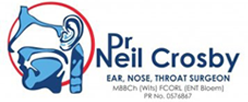Are you seeking relief from ear troubles that disrupt your daily life or your child’s development? Perhaps you have noticed muffled hearing, persistent discomfort, or frequent infections. We understand how overwhelming these issues can be, but effective solutions exist. An evaluation of your symptoms can open the door to better ear health and enhanced well-being.
What are the different types of ear conditions?
Your ears are delicate structures that require careful care and attention. Several conditions could cause hearing problems or loss:
- Hearing Loss (Sensorineural or Conductive): Sensorineural hearing loss involves damage to your inner ear or auditory nerve. Conductive hearing loss occurs when sound cannot pass through your outer or middle ear.
- Ear Infections (Otitis Media or Otitis Externa): Otitis Media affects your middle ear, while otitis externa, also known as “swimmer’s ear,” involves your outer ear canal.
- Earwax Buildup (Cerumen Impaction): Excess earwax can block the canal, leading to hearing difficulties or discomfort.
- Eustachian Tube Dysfunction: This may cause feelings of ear fullness, popping sensations, or trouble equalising pressure.
- Perforated Eardrum (Tympanic Membrane Perforation): A tear in the eardrum can cause hearing loss and recurrent infections.
- Cholesteatoma: Abnormal skin growth in the middle ear that can gradually affect nearby structures over time.
- Otoclerosis: Unwanted bone growth in the middle ear, commonly affecting the stapes bones and leading to hearing loss.
What are some key ear procedures?
Dr Neil Crosby provides various surgical options to help manage chronic ear conditions and enhance your hearing experience. Some of these procedures are as follows:
- Myringotomy: A small incision in the eardrum to ease pressure or drain fluid.
- Tympanoplasty: A repair of the perforated eardrum to restore proper function.
- Stapedectomy: Removal and replacement of the stapes bone to treat otosclerosis.
- Bonebridge: An implant that bypasses damaged parts of the ear and sends sound directly to the inner ear through bone conduction.
- Ear Tube Insertion (Grommets): Tiny tubes are placed in the eardrum to allow fluid to drain and improve ventilation in the middle ear.
Why should I consider grommets for my child?
Many ear infections in children actually start in the nose, often involving the adenoids- a patch of tissue at the back of the throat that helps trap germs. Because your child’s Eustachian tube is smaller and lies more horizontally, bacteria can travel easily from the nasal passages to the middle ear. Chronic Otitis Media may be painless yet still affect your child’s hearing. Ongoing hearing loss in young children can lead to delays in speech development, struggles at school, and social difficulties. If it isn’t treated by the time your child turns five, the risk of permanent speech delay increases.
In addition, some children develop balance issues from the middle ear fluid. If your child is unsteady, it is a good idea to have their ear function checked. Grommets–also known as ventilation tubes– help by letting air into the middle ear, which prevents fluid from building up. The fluid drains through the Eustachian tube into the throat instead of lingering behind the eardrum. This simple procedure often brings quick relief from pressure and can noticeably improve hearing.
Children with significant speech delay may also benefit from working with a speech therapist to catch up, especially if the delay was caused by hearing issues related to fluid buildup.
How should I care for myself or my little one after surgery?
After undergoing grommet insertion surgery, Dr Crosby will provide detailed aftercare instructions. It is important to maintain proper ear care to prevent infections. While it is safe to swim in clean water, you or your child should avoid pools or hot tubs that appear dirty, as they can increase the risk of bacterial infections. Be mindful of any fluid leakage from your or your little one’s ear after the procedure, as this could be a sign of infection and requires immediate attention from a healthcare provider.
Children often adapt quickly to improved hearing. Some might feel startled by normal sounds at first, but this usually settles rapidly. Regular check-ups, plus any recommended speech therapy, can help your child make the most of their improved hearing.
Effective treatments exist for many ear conditions. You can seek help to ease discomfort, protect your child’s development, and restore clarity to everyday sounds.
If you or your child experiences any ear-related concerns, consider contacting us to discuss these procedures and options with Dr Neil Crosby.

